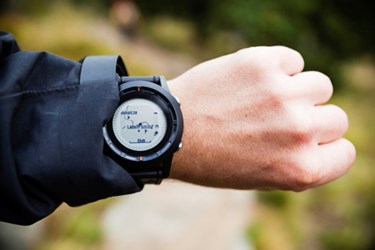IoT: Wearable Technology Is Becoming A Must-Have For Manufacturing

By Christine Kern, contributing writer

Wearables are not new. Google Glass has been used in plant asset maintenance for a couple of years now. Tools like Innovega or MicroOptical have also been used by early adopters to display service instructions and illustrated parts breakdowns (IPBs) to service technicians for more than a decade. These heads-up display technologies (HUDs) allow technicians to readily access repair information in the field while servicing equipment, shortening downtime, and increasing the effectiveness of repair activities.
According to LNS Research, soon “the Internet and wireless technologies will connect different sources of information such as sensors, mobile phones, and cars in an ever tighter manner. The number of devices that connect to the Internet is — seemingly exponentially — increasing. These billions of components produce consume and process information in different environments such as logistic applications, factories, and airports as well as in the work and everyday lives of people. The society needs new, scalable, and compatible and secure solutions for both the management of the ever more broad, complexly-networked Internet of Things, and also for the support of various business models.”
But the items that are making the biggest splash now are not smartphones and tablets, but watches and glasses — in most cases, these small, lightweight devices are linked to the smartphone. While these devices carry the capacity to provide much of the same information a user can to glean from our mobile devices, it does so in uniquely accessible ways. Increasingly, tech manufacturers are challenging the limitations of tablets and smartphones.
The power of consumerization has continually driven the cost of technology down and led to the wide adoption of consumer technology in the manufacturing sector. Wearable technology will not be an exception, and the lowering of the cost of wearable technology would make it more prevalent throughout the plant, including the asset performance management (APM) space.
The IoT changes the game in APM. What the IoT, coupled with wearable technology, will deliver is a new capability that has not yet been exploited. To date, the IoT has provided just additional data, which has improved the ability to predict failure and trigger maintenance activity.
The practice of reliability centered maintenance (RCM) has focused on trying to answer questions using tools like FMEA (failure mode effects analysis) in an off-line mode, but with wearable technology, RCM specialists could access a complete operational profile of equipment, in the field, as they are servicing it. The ability to actually see an animation of the equipment performance changes leading up to the current situation will provide better insight as to what actions to take to preclude future failures. This is but one example of how the combination of the IoT and wearable technology will likely transform APM.
As Paul Leavoy noted in his LNS Research blog post on wearable technology and EHS (environmental, health, and safety), safety is another area where the impact of wearable technology can be significant. As operator and maintenance tech roles merge in some industries, the benefits of having more information readily at hand will transform the value we can extract from our manufacturing assets.
There are four aspects where wearables have great potential to shape the EHS landscape.
- Health And Environmental Monitoring. A wearable monitor, in the form of a watch or waist band or other applied sensor, could detect unsafe conditions and alert the worker accordingly when the danger threshold has been crossed.
- Augmented Reality. Google Glass or other such devices can be used in industrial and manufacturing environments to connect field technicians with dispatchers via a head-mounted visual augmentation device to speed determination of problems.
- Communication. Via new technology, critical time can now be saved in the midst of a critical (or noncritical, for that matter) situation.
- Access To Personalized Data. Wearables mean that we could have access to vast amounts of data pertinent to all our daily jobs that is personalized to the individual.
